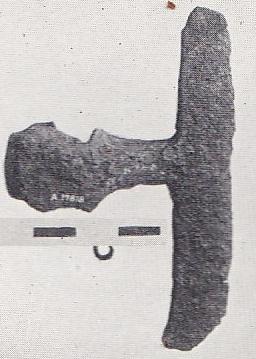
Why Did Anglo Saxons Come to England?
The arrival of Anglo-Saxons in Britain represents one of the most profound demographic and cultural transformations in European history. Between the 5th and 7th centuries CE, these Germanic peoples fundamentally reshaped the socio-political landscape of post-Roman Britain, establishing kingdoms that would become the foundation of medieval English society.
Historical Context

Britain during the year 540. Anglo-Saxon kingdoms in red and orange, Brittonic kingdoms in black (Illustration: Wikicommons CC BY-SA 3.0)
The Decline of Roman Britain
The Roman withdrawal from Britain in 410 CE left a power vacuum that dramatically altered the island's political and social structures. Roman administrative systems collapsed, leaving local communities vulnerable to external pressures and internal fragmentation. This period of instability created conditions ripe for migration and conquest.
Tribal Origins and Motivations
The Anglo-Saxon migrants primarily originated from three Germanic tribal groups: the Angles from Schleswig-Holstein, the Saxons from northwestern Germany, and the Jutes from the Jutland peninsula. Historians like Nicholas Higham argue that their migration was driven by a complex interplay of factors, including environmental pressures, population growth, and opportunities for territorial expansion.
Migration Patterns

Reconstructed Anglo-Saxon homes in West Stow, Suffolk (Photos: Rob Farrow (1, 3) Ron Strutt (2) Keith Evans (4) CC BY 2.5)
Initial Invasions and Settlements
The first significant Anglo-Saxon incursions occurred during the mid-5th century. According to the traditional narrative preserved in Bede's "Ecclesiastical History of the English People," the British leader Vortigern invited Saxon mercenaries to help defend against Pictish and Scottish raids. This initial invitation quickly transformed into large-scale migration and settlement.
Archaeological evidence suggests these migrations were not a single, uniform movement but a gradual process of settlement, conflict, and cultural integration. Coastal regions of eastern and southern Britain became primary landing sites and subsequent settlement areas.
Social and Cultural Transformation

Sketch of 6th century Anglo-Saxon spear and hammer amulets dedicated to Woden (Odin) and Thunor (Thor). Unlike their Nordic counterparts, these Mjölnir amulets lack the short handle design. Discovered in Gilton, Kent, England.
Displacement and Interaction
The arrival of Anglo-Saxons dramatically altered existing social structures. Celtic British populations were partially displaced, partially integrated, and in many regions, marginalized. Recent genetic studies indicate a more nuanced picture of population replacement, suggesting significant intermixing rather than complete displacement.
Religious and Linguistic Changes
The migrants brought their Germanic language and pagan religious practices, gradually replacing Latin and Celtic languages in many regions. Old English emerged as a dominant linguistic form, fundamentally different from the Romance and Celtic languages previously spoken.
Political Development

Illustration from the Old English Hexatuch depicting an Anglo-Saxon King with his Witan, located in the British Library, London
Kingdom Formation
By the 7th century, several distinct Anglo-Saxon kingdoms had emerged, including Wessex, Mercia, Northumbria, East Anglia, and Kent. These kingdoms, known as the Heptarchy, represented complex political entities with sophisticated legal and social systems.
Historians like Steven Bassett argue that these kingdoms were not merely military constructs but sophisticated political organizations that developed intricate social hierarchies and governance structures.
Environmental and Economic Factors

Axe head discovered in Thames (Photo: The Viking Compendium)
Agricultural Adaptation
The Anglo-Saxons introduced advanced agricultural techniques, including more efficient farming methods and land management strategies. They cleared forests, established new agricultural settlements, and developed more productive farming systems than their predecessors.
Trade and Maritime Capabilities
Despite popular perceptions of isolation, Anglo-Saxon societies maintained extensive maritime trade networks. Archaeological findings reveal sophisticated trading connections across the North Sea and beyond.
Scholarly Perspectives
Different historical interpretations exist regarding the nature of the Anglo-Saxon migration. Some scholars, like Peter Heather, emphasize the violent displacement of indigenous populations, while others, such as Guy Halsall, argue for a more gradual process of cultural and demographic transformation.
The Anglo-Saxon migration to Britain was not a singular event but a complex, multifaceted process of cultural, linguistic, and political transformation. These Germanic settlers fundamentally reshaped the social landscape, establishing foundations for medieval English society that would endure for centuries.
Their legacy extends far beyond mere territorial conquest, representing a profound moment of cultural synthesis and societal reconstruction in European history.
Frequently Asked Questions (FAQs)
- Were all Anglo-Saxons warriors?
No, Anglo-Saxon society was diverse, including farmers, craftsmen, traders, and warriors.
- Did they completely replace the existing British population?
Archaeological and genetic evidence suggests significant intermixing rather than total replacement.
- How long did the migration process take?
The migration and settlement occurred gradually over approximately 200 years.
- What languages did they speak?
They spoke various Germanic dialects that eventually evolved into Old English.
- Why did they choose Britain?
Motivations included available land, political instability, population pressures, and economic opportunities.
References
Higham, Nicholas. "Rome, Britain and the Anglo-Saxons"
Bede. "Ecclesiastical History of the English People"
Bassett, Steven. "The Origins of Anglo-Saxon Kingdoms"
Heather, Peter. "Empires and Barbarians"
Halsall, Guy. "Warfare and Society in the Barbarian West"








